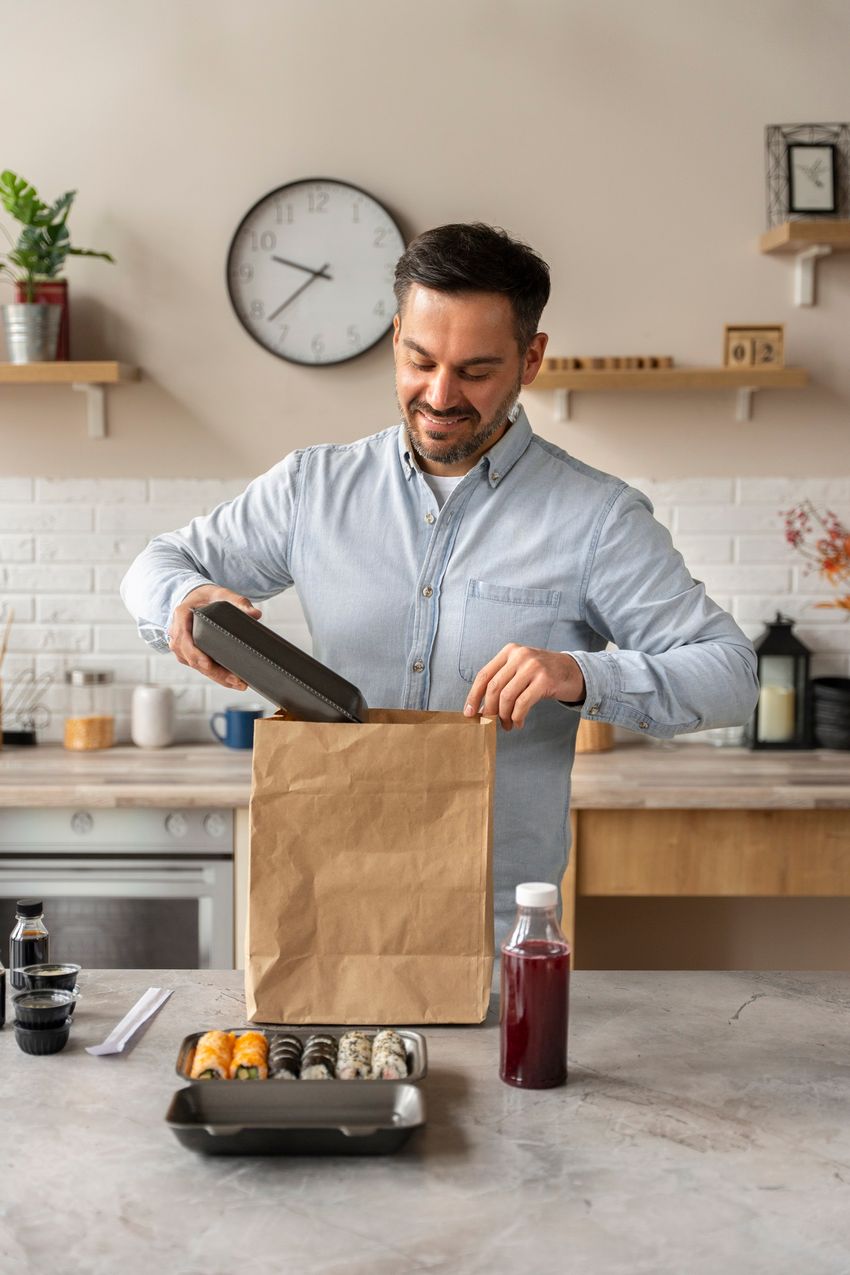The rise of virtual restaurants: a new horizon in the catering industry
In an era where digital transformation redefines all sectors, the catering industry is undergoing significant evolution. With the emergence of virtual restaurants, new opportunities arise for entrepreneurs to pursue their culinary ambitions in innovative ways. Discover what a virtual restaurant is, the benefits it offers, and some tips for starting one.
What is a virtual restaurant?
A virtual restaurant is an eating establishment that exclusively offers meals through online orders. These restaurants have no physical seating for customers and focus entirely on takeout and delivery services. This can be done through their own or an external delivery service, or a combination of both. As a result, virtual restaurants can operate efficiently with lower overhead costs.
What's the difference with a 'dark kitchen'?
Although the terms virtual restaurant and dark kitchen are often used interchangeably, there are indeed differences. A virtual restaurant has its own private, physical kitchen where dishes for the online brand are prepared. A dark kitchen, on the other hand, is a rented kitchen space that is managed by an external party or shared with various restaurants. Both virtual restaurants and dark kitchens operate solely based on delivery and takeout.
Benefits of a virtual restaurant
1. Lower startup costs
Starting a virtual restaurant requires no large investments in a physical location, interior design, furniture, or an extensive front-of-house staff. This makes it an attractive option for new entrepreneurs who want to experiment with their culinary ideas without significant financial risk.
2. Location flexibility
Virtual restaurants have the freedom to establish their kitchen in areas where rent costs are lower since the location is not decisive for attracting customers. This means entrepreneurs can focus on operational efficiency rather than paying for premium locations.
3. Operational efficiency
Without the need to maintain a dine-in service, virtual restaurants can streamline their processes and concentrate on the quality of food and the efficiency of preparation and delivery. This results in less waste and higher productivity.
4. Wider customer reach
Through the power of online marketing and delivery platforms, virtual restaurants can easily reach a broader audience than traditional restaurants. They are not limited to customers who are geographically close, thereby significantly expanding their customer base.
5. Quick adaptation to trends
Virtual restaurants can quickly adjust their menus and experiment with new dishes without worrying about the logistics of changing physical menus or training staff. This makes it easier to respond to culinary trends and customer preferences.
6. Less staff needed
Since there is no need for waiters, dishwashers, and other staff required for a dine-in experience, virtual restaurants can operate with a smaller team. This reduces personnel costs and simplifies management.
7. Optimized for online sales
With a business model designed from the start for online orders, virtual restaurants can optimize their processes for online sales, from digital marketing to customer service. This leads to a smoother purchasing experience for the customer and higher sales volumes.
These benefits make virtual restaurants an attractive option for entrepreneurs looking for innovative ways to enter or expand in the hospitality market. With the right approach and support, virtual restaurants can thrive in the current digital and rapidly changing culinary landscape.

©Freepik.com
Tips for starting a virtual restaurant
1. Invest in technology
Using advanced online cash register systems and webshop solutions, like those from Unipage, allows you to efficiently process orders, manage payments, and provide a seamless customer experience. These technologies are essential for efficiently managing your virtual restaurant and stimulating growth.
2. Optimize your online presence
A strong online presence is crucial for attracting customers to your virtual restaurant. This includes a professional website, active social media profiles, and good reviews on online platforms. Optimizing your online presence helps build brand awareness and attract new customers.
3. Choose the right delivery partners
Besides takeout options, choosing reliable delivery partners or having your own delivery option is crucial for ensuring timely and quality delivery of your meals. A good delivery experience increases customer satisfaction and encourages repeat purchases. Research and possibly choose partners that share your culinary values and cover an extensive delivery area.
4. Focus on packaging and presentation
Since customers cannot experience your meals on-site, packaging plays a key role in presentation and first impressions. Invest in quality, attractive, and environmentally friendly packaging that preserves the quality of your dishes and strengthens your brand identity.
5. Analyze and adjust
Using data analysis tools can provide insights into customer preferences, ordering patterns, and operational efficiency. These insights allow you to continuously refine and optimize your offerings and processes for better performance and customer satisfaction.
6. Build a strong brand
A strong and recognizable brand is essential to stand out in the digital world. This includes developing an attractive brand name, logo, and unique selling proposition. A clearly defined brand identity helps attract customers and build an emotional connection with your audience.
By implementing these tips, you can maximize the unique opportunities that virtual restaurants offer. Success depends on a combination of culinary innovation, technological integration, and strong marketing strategies. With the right approach and tools, it is possible to create a thriving virtual restaurant that achieves both culinary and commercial success.
Curious how Unipage can further assist you?
Unipos PRO, Unipage's advanced cash register system, and our webshops are designed to meet the unique challenges of virtual restaurants. With these tools, you can efficiently manage orders, obtain real-time insights into your restaurant's performance, and provide a seamless customer experience from order to delivery.
Interested in discovering how Unipage can further support you in optimizing your hospitality business? Do not hesitate to contact one of our experts today!
Request a demo
We will contact you within 24 hours for a demo